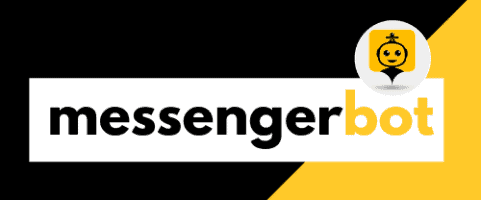Key Takeaways
- Understanding Customer Acquisition Cost (CAC) is essential for optimizing marketing strategies and achieving sustainable growth.
- The formula for calculating CAC is: CAC = Total Sales and Marketing Expenses / Number of New Customers Acquired.
- A lower CAC indicates efficient marketing processes, while a higher CAC suggests the need for strategic reevaluation.
- Knowing the CAC in relation to Customer Lifetime Value (CLV) helps businesses ensure sustainable growth—aim for CAC to be one-third of CLV.
- Regularly analyzing CAC allows businesses to refine their marketing budgets and improve profitability.
- Utilizing advanced tools like Messenger Bots can streamline customer interactions, potentially lowering acquisition costs.
Understanding the cost of acquiring a customer is crucial for any business aiming to optimize its marketing strategies and drive sustainable growth. In this article, we will delve into the intricacies of Customer Acquisition Cost (CAC), exploring its definition, significance, and the formula used to calculate it. We will provide real-life examples to illustrate the cost of acquiring a new customer and break down the marketing cost of acquisition per customer to highlight the factors that influence these expenses. Additionally, we will address common queries such as what is the cost to get a customer? and examine key performance indicators (KPIs) that measure the cost of acquiring a new client. By the end of this article, you will have a comprehensive understanding of the cost of acquisition of a customer and how to effectively manage it to enhance your business’s profitability.
What is the cost to acquire a customer?
The cost to acquire a customer (CAC) is a critical metric for businesses, representing the total expense incurred to gain a new customer. This figure is essential for evaluating the effectiveness of marketing strategies and overall business health. Here’s a comprehensive breakdown of how to calculate CAC, its significance, and strategies to optimize it:
Understanding Customer Acquisition Cost (CAC)
The formula for calculating CAC is straightforward:
- Formula: CAC = Total Sales and Marketing Expenses / Number of New Customers Acquired
- Components: Include all costs associated with marketing campaigns, sales team salaries, advertising expenses, and any tools or software used in the customer acquisition process.
Understanding the cost of acquiring a new customer is vital for assessing the efficiency of your marketing efforts. A lower CAC indicates efficient marketing and sales processes, while a higher CAC can signal the need for strategy reevaluation. By keeping track of this metric, businesses can make informed decisions that enhance profitability.
Importance of Knowing the Cost of Getting a Customer
Knowing the cost of getting a customer is crucial for several reasons:
- Financial Health: A lower CAC indicates efficient marketing and sales processes, while a higher CAC can signal the need for strategy reevaluation.
- Customer Lifetime Value (CLV): Understanding CAC in relation to CLV helps businesses determine the sustainability of their growth. A common benchmark is to maintain a CAC that is one-third of the CLV.
By understanding and optimizing the cost to acquire a customer, businesses can enhance their marketing effectiveness, improve profitability, and ensure long-term success. For more insights on customer acquisition costs, check out our detailed guide on Understanding customer acquisition costs.
What is the formula for the cost of acquiring a customer?
Understanding the formula for the cost of acquiring a customer is essential for any business aiming to optimize its marketing and sales strategies. The Customer Acquisition Cost (CAC) formula provides a clear framework to evaluate how much a company spends to gain a new customer. This formula is crucial for assessing the effectiveness of marketing campaigns and sales efforts.
Customer Acquisition Cost Formula Explained
To calculate the Customer Acquisition Cost (CAC), follow this comprehensive formula:
CAC = (Total Cost of Sales + Total Cost of Marketing) ÷ Number of New Customers Acquired.
- Total Cost of Sales: This includes all expenses related to your sales team, such as salaries, commissions, bonuses, and any sales tools or software used.
- Total Cost of Marketing: This encompasses all marketing expenses, including advertising costs, content creation, social media marketing, and any promotional activities aimed at attracting new customers.
- Number of New Customers Acquired: This is the total number of new customers gained during the period you are analyzing, typically a month or a quarter.
For example, if your total sales expenses are $50,000, your marketing expenses are $30,000, and you acquired 200 new customers, your CAC would be calculated as follows:
CAC = ($50,000 + $30,000) ÷ 200 = $400.
Understanding CAC is crucial for businesses as it helps in evaluating the efficiency of marketing strategies and sales efforts. A lower CAC indicates a more efficient acquisition process, while a higher CAC may signal the need for strategic adjustments. For further insights on optimizing customer acquisition strategies, you can explore HubSpot for marketing insights.
How to Calculate Cost of Acquiring a Customer
Calculating the cost of acquiring a customer involves a systematic approach to ensure accuracy. Start by gathering all relevant data regarding your sales and marketing expenditures. This includes:
- Tracking all sales-related costs, such as employee salaries and commissions.
- Documenting marketing expenses, including digital advertising, content creation, and promotional campaigns.
- Counting the number of new customers acquired during the specified timeframe.
Once you have this data, apply the CAC formula mentioned above. Regularly calculating your CAC can help you identify trends and make informed decisions about your marketing budget and strategies. For more detailed guidance on this topic, consider checking out our resources on calculating customer acquisition costs.
What is an example of a customer acquisition cost?
Understanding the cost of acquiring a customer is essential for any business aiming to optimize its marketing strategies. A practical cost of acquiring a customer example can illustrate how various expenses contribute to this critical metric. For instance, consider a company that invests in multiple channels to attract new customers. This includes digital advertising, social media campaigns, and promotional events.
Cost of Acquiring a Customer Example in Real Life
Let’s say a small e-commerce business spends $10,000 on marketing in a month. This budget covers:
- $4,000 on Facebook ads
- $3,000 on Google AdWords
- $2,000 on influencer partnerships
- $1,000 on email marketing campaigns
During this period, the business successfully acquires 500 new customers. To calculate the cost of acquiring a new customer, we use the formula:
CAC = Total Acquisition Costs / Number of New Customers
Applying the numbers:
CAC = $10,000 / 500 = $20
This means the company spent $20 to acquire each new customer. This example highlights how different marketing channels contribute to the overall cost of getting a customer and emphasizes the importance of tracking these expenses to ensure profitability.
Analyzing Different Customer Acquisition Cost Examples
When analyzing various cost of acquisition of a customer examples, it’s crucial to consider the industry and specific marketing strategies employed. For instance:
- A SaaS company might have a higher CAC due to extensive sales processes and customer support, averaging around $300 per customer.
- In contrast, a retail business may achieve a lower CAC, around $15, by leveraging social media and email marketing effectively.
Understanding these differences helps businesses tailor their strategies. For example, if a company finds that its average cost of acquiring a new customer is too high, it may explore automation tools like Messenger Bots to streamline interactions and reduce costs. By enhancing customer engagement through automated responses, businesses can potentially lower their CAC significantly, making it a valuable investment.
What is the marketing cost of acquisition per customer?
The marketing cost of acquisition per customer, commonly referred to as Cost Per Acquisition (CPA), is a critical metric for evaluating the effectiveness of marketing strategies. To accurately calculate CPA, follow these steps:
- Total Marketing Costs: Begin by determining the total marketing expenses incurred during a specific period. This includes costs associated with advertising, promotions, and any other expenditures aimed at acquiring new customers.
- Number of New Customers: Next, identify the number of new customers acquired during the same period. This data can be sourced from sales records or customer relationship management (CRM) systems.
- Calculation: Divide the total marketing costs by the number of new customers acquired. The formula is:
CPA = Total Marketing Costs / Number of New Customers
For example, if a company spends $10,000 on marketing and acquires 100 new customers, the CPA would be $100.
Understanding CPA is essential for optimizing marketing strategies. A lower CPA indicates more efficient marketing efforts, while a higher CPA may signal the need for adjustments in targeting or messaging.
Recent studies suggest leveraging advanced tools, such as Messenger Bots, can enhance customer engagement and potentially lower CPA by streamlining communication and improving conversion rates. According to a report by the Harvard Business Review, businesses that utilize chatbots can see a significant reduction in customer acquisition costs due to increased efficiency in handling inquiries and guiding potential customers through the sales funnel.
For further reading, consider exploring resources from authoritative sources such as the American Marketing Association and HubSpot, which provide in-depth insights into CPA and effective marketing strategies.
Breakdown of Marketing Cost of Acquisition
The breakdown of marketing cost of acquisition involves several key components that contribute to the overall cost of getting a customer. Understanding these components can help businesses refine their marketing strategies and optimize their spending:
- Advertising Expenses: This includes costs for online ads, print media, and any promotional campaigns aimed at attracting new customers.
- Content Creation: Expenses related to creating engaging content, such as blog posts, videos, and social media posts, which are essential for attracting and retaining customers.
- Sales Team Costs: Salaries, commissions, and training costs for sales personnel who directly interact with potential customers.
- Technology and Tools: Investments in software and tools, like CRM systems and analytics platforms, that help track and manage customer interactions.
By analyzing these components, businesses can identify areas for improvement and potentially reduce the cost of acquiring a new customer.
Factors Influencing Marketing Cost of Acquiring a New Customer
Several factors can influence the marketing cost of acquiring a new customer, impacting how businesses strategize their marketing efforts:
- Industry Competition: In highly competitive industries, the cost of acquiring a new customer tends to be higher due to increased advertising spend and promotional offers.
- Target Audience: The demographics and preferences of the target audience can affect marketing costs. Tailoring campaigns to specific audiences may require more investment.
- Marketing Channels: Different channels (social media, email, PPC) have varying costs associated with them. Understanding which channels yield the best ROI is crucial.
- Seasonality: Certain times of the year may see fluctuations in customer acquisition costs due to seasonal demand or promotional events.
By recognizing these factors, businesses can better strategize their marketing efforts and manage the cost of acquiring a new client effectively.
What is the cost to get a customer?
The cost of acquiring a customer is a pivotal metric that businesses must understand to enhance their marketing strategies and drive profitability. This cost, often referred to as Customer Acquisition Cost (CAC), encompasses all expenses related to attracting and converting a new customer. By analyzing the cost of getting a customer, businesses can make informed decisions that optimize their marketing efforts and improve their bottom line.
Cost of Acquisition of a Customer: A Detailed Look
The cost of acquisition of a customer includes various components that contribute to the overall expenditure. Key elements include:
- Sales Team Expenses: This covers salaries, commissions, and bonuses for sales personnel who play a crucial role in acquiring new customers.
- Marketing Costs: All expenses related to marketing campaigns, including digital advertising, content marketing, and social media promotions, fall under this category.
- Technology and Tools: Investments in CRM systems, marketing automation tools, and analytics software that support customer acquisition efforts.
- Operational Costs: Overhead costs associated with running sales and marketing departments, such as office space and utilities.
- Lead Generation Costs: Expenses incurred in generating leads, including costs for webinars, events, or partnerships that attract potential customers.
To effectively manage the cost of acquiring a new customer, businesses should regularly assess these components and identify areas for improvement. For instance, leveraging automation tools like Messenger Bot can streamline customer interactions, thereby reducing overall acquisition costs.
Average Cost of Acquiring a New Customer in Various Industries
The average cost of acquiring a new customer varies significantly across different industries. For example:
- Retail: The average CAC can range from $10 to $50, depending on the marketing strategies employed.
- Technology: In the tech sector, the CAC may be higher, often between $200 and $500, due to the complexity of products and longer sales cycles.
- Healthcare: The cost of acquiring a new customer can reach upwards of $300, reflecting the need for extensive marketing and trust-building efforts.
Understanding these industry benchmarks helps businesses set realistic goals for their customer acquisition strategies. By analyzing the cost of acquiring a new customer, companies can align their marketing budgets with expected returns, ensuring sustainable growth.
Does it cost 5 times as much to get a new customer?
Acquiring a new customer can indeed cost five times more than retaining an existing customer. This significant difference in cost is primarily due to various factors involved in customer acquisition, such as marketing expenses, sales efforts, and the time required to build trust and relationships with new clients. Understanding the cost of acquiring a new customer is essential for businesses aiming to optimize their marketing strategies and improve profitability.
Understanding the Cost of Acquiring a New Client
The cost of acquiring a new customer (CAC) encompasses all expenses related to attracting new clients, including advertising, promotions, and sales team efforts. According to a study by the Harvard Business Review, businesses often spend five to twenty-five times more to acquire a new customer than to retain an existing one. This highlights the importance of calculating the cost of getting a customer accurately to ensure effective budget allocation.
Moreover, the average cost of acquiring a new customer varies across industries. For instance, e-commerce businesses may experience higher CAC due to competitive advertising costs, while service-based industries might have lower acquisition costs due to referrals and word-of-mouth marketing. Understanding these nuances can help businesses tailor their strategies accordingly.
Which KPI Measures the Cost of Acquiring a New Customer?
To effectively measure the cost of acquisition of a customer, businesses should focus on key performance indicators (KPIs) such as:
- Customer Acquisition Cost (CAC): This is the primary metric that calculates the total cost of acquiring a new customer, including all marketing and sales expenses.
- Customer Lifetime Value (CLV): This metric estimates the total revenue a business can expect from a customer throughout their relationship. Comparing CLV to CAC helps determine the profitability of customer acquisition strategies.
- Return on Investment (ROI): Calculating the ROI of marketing campaigns can provide insights into the effectiveness of customer acquisition efforts.
By analyzing these metrics, businesses can make informed decisions about their marketing strategies and improve their cost of acquiring a new customer over time. Implementing tools like Messenger Bot can also enhance customer engagement, leading to better retention rates and lower acquisition costs.
Which metric measures the cost of acquiring a new customer?
When evaluating the cost of acquiring a new customer, the primary metric to consider is the Customer Acquisition Cost (CAC). This metric quantifies the total expenses incurred to gain a new customer, encompassing marketing and sales costs. Understanding CAC is crucial for businesses aiming to optimize their marketing strategies and improve profitability.
Key Metrics for Evaluating Customer Acquisition Cost
To effectively measure the cost of acquiring a new customer, several key metrics should be analyzed:
- Customer Acquisition Cost (CAC): This is the total cost of sales and marketing divided by the number of new customers acquired in a specific period. It provides a clear picture of how much a business spends to gain each customer.
- Customer Lifetime Value (CLV): This metric estimates the total revenue a business can expect from a customer throughout their relationship. Comparing CLV to CAC helps determine the sustainability of customer acquisition efforts.
- Return on Investment (ROI): Calculating the ROI of marketing campaigns can help assess the effectiveness of customer acquisition strategies. A positive ROI indicates that the cost of acquiring a customer is justified by the revenue generated.
- Cost per Lead (CPL): This metric measures the cost associated with generating a lead. Understanding CPL can help businesses refine their marketing efforts to improve CAC.
Cost of Acquisition Customer Lifetime Value: What You Need to Know
The relationship between Customer Acquisition Cost and Customer Lifetime Value is vital for assessing the effectiveness of marketing strategies. A common rule of thumb is that the CLV should be at least three times the CAC for a business to be considered healthy. This ratio ensures that the investment in acquiring customers is sustainable in the long run.
For example, if the average cost of acquiring a new customer is $100, the CLV should ideally be $300 or more. This balance allows businesses to invest in growth while maintaining profitability. Tools like Messenger Bot can help streamline customer interactions, potentially lowering CAC and increasing CLV through enhanced engagement strategies.







